Soviet HI-FI and its creators: everything has already been stolen from us or TDS-5 from engineers YAMAHA and Italian designer
In the comments to the past material of this cycle, users raised the issue of plagiarism in the Soviet audio technology. Indeed, due to the technological backwardness of the USSR in this sector of the national economy, it was difficult without an orientation towards the “decaying” West and the technologically developed East. Periodically, such borrowing acquired the form of direct copying, with some changes that related to the element base and technological nuances.

For example, there was no necessary polymer film - they replaced it with the one that was, the capacitors did not fit in capacity - they fitted a circuit, etc. In defense of Soviet engineers, it can be said that the full development cycle of similar devices would take decades, and the citizens of the USSR from a certain point wanted to use really high-quality equipment that meets the requirements of the time. Quickly such a task could be solved only by partial or complete plagiarism. Under the cut a story about, perhaps, the most accurate cloning in the Soviet audio equipment.
One of the most vivid examples of such borrowing was the “TDS-5” isodynamic headphones, which were produced by the Saratov Radio Engineering Plant No. 887 (later it was FGUP NPP Kontakt) since 1984.

By the way, now the enterprise lives and almost well under the name of NPP Kontakt JSC, produces vacuum switches and NFC chips, and is striving to become a Skolkovo resident. Despite the presence of native isodynamic analogues by that time, the developers of TDS-5 decided not to philosophize slyly and copy, perhaps, the most famous headphones of the Japanese company YAMAHA. Therefore, in this case, the creators of TDS-5 need to be understood specifically Japanese engineers who were able to design a truly iconic model, both for their market in the 70s, and for ours in the 80s.
In the mid-seventies, portable headphones became high-demand products not only in the United States and Europe, but also in Japan. Until 1976, the most popular headphone emitters were classic speakers. A number of companies, including STAX in Japan, KOSS in the USA and Sennheiser in Europe, also created in small series exotic electrostatic headphones for a narrow audiophile market. The sound quality in dynamic headphones of that period left much to be desired, and the fidelity of electrostatic reproduction was prohibitively expensive for the vast majority of potential consumers. The vacuum between the dynamic jamblings and the financially inadequate electrostats of the 70s should have been occupied by orthodynamics.
The isodynamic principle of acoustic radiation itself was well studied in the 50s and was recognized as not very promising due to the lack of then suitable materials for membranes. The appearance of strong and fairly thin polymer films in the 60s changed the view of orthodynamic drivers, however, the creation of such devices was rather experimental than serial.
The market was not spoiled by high sound quality, and its demands were completely satisfied with dynamic emitters. The narrow audiophile segment covered electrostatics, but they were expensive, imperfect, and required mandatory reinforcement, which made exploitation difficult. Of the (ortho) dynamic headphones were even more exotic, individual attempts by companies to create successful and popular isodynamic headphones failed with a crash in the late 60s. However, the engineers of YAMAHA decided to master this complex task, and in 1972 the specification for orthodynamic headphones, the future HP-1 (YH-1), was formed.
The main problem of the creators of these headphones was not fundamentally theoretical, but technological. Hundreds of materials were tested as membrane materials. During the development of HP-1 (YH-1), a 12-µm-thick polyester film was used for the first time, which has already been used in the manufacture of tape cassettes.
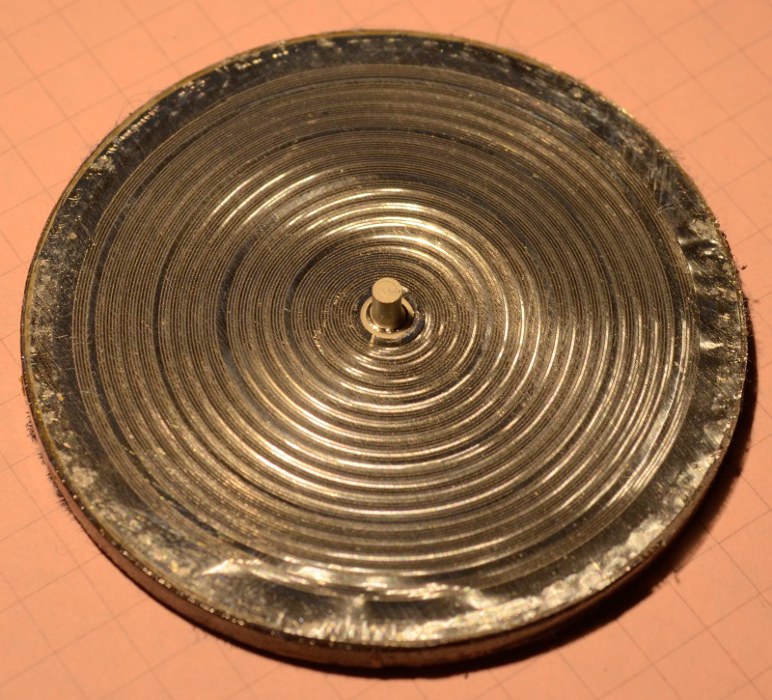
Orthodynamic driver
The material had sufficient strength, and also easily withstand the process loads when printing a metal layer, which was an electromagnetic coil. Thus, the “philosopher's stone” of isodynamics was found, which made the technical process simple and relatively inexpensive.

The issue of product recognition and ergonomic convenience was entrusted to the Italian industrial designer Mario Bellini, who was famous at the time. Who was impressed with the product's characteristics, and, one might say, put the soul into the headband and recognizable features of theTDS-5 YH-1 (HP-1). According to representatives of the sales of the American audio press (in the 70s very critical of Japanese products), Bellini managed to create the best headphone ergonomics that existed at the time.
By 1976, the first serial samples were made. The start of sales in Japan was extremely successful, since the use of the isodynamic principle allowed us to simultaneously improve the fidelity of playback, reduce the weight and size of the headphones, thereby significantly improving ergonomics. With the advent of HP-1 (YP-1), YAMAHA has become one of the world leaders in portable audio, such as KOSS, Sennheiser, Beyerdynamic and SONY. Only these headphones were honored as a cult product on the company's official website.
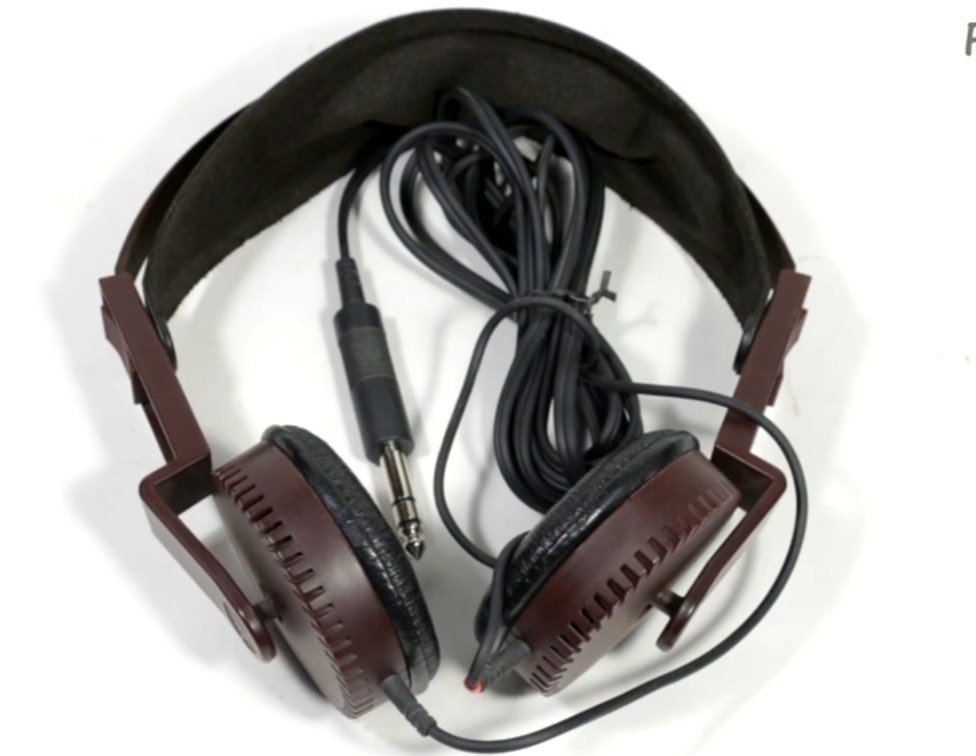
The caution of European and American music lovers in relation to the Japanese novelty was quickly replaced by rush demand, which brought YAMAHA AUDIO DIVISION a very impressive income. However, these serious results in the world where KOSS and Sennheiser reigned faded in comparison with the popularity of the product in the Japanese market, where the HP-1 became a real hit.
Contrary to the calculations of marketers YAMAHA, the model became popular not only among audiophiles, but also won the mass user. In connection with the interest of the market in the device, it was developed, by the end of 1976 an evolutionary sequel of the cult device called HP-2 was created. This was followed by their own clones from YAMAHA with minor changes under the indices HP-3, YH-1, YH-2, YH-3. The most significant difference in their design was the reduced diameter of the effective membrane area, which was 46 mm for YH-3, instead of 48 mm for HP-1.
Specifications of the legendary ears from YAMAHA were as follows:
Among other things, perforated ferrite magnets of round shape were used in the design. Reducing the diameter of the membrane slightly reflected on the frequency response, but in general the sound did not change anything. Really impressive in these headphones was the price, which in 1976 was $ 47 for the HP-2 and $ 55 for the HP-1 in the United States, which did not differ much from the cost of the average dynamic headphones of that time. In the Japanese homeland, their cost was even lower.
As I noted in one of the past materials, it was important for the Soviet leadership in the early 80s to make the people understand that the USSR could overtake and overtake. The lag, noticed by the party and the Soviet government, was planned to be overcome at the Stakhanov pace. To this end, specially trained people imported into the USSR the best examples of Western technology, including audio, for further preparation and industrial espionage. Approximately in this way, the cult YAMAHA headphones came to the country of the victorious developed socialism, and not to the creative audiophile Lychnitsky, or to the important semi-defense enterprise - Radio Engineering Plant No. 887, which is also the Research and Production Enterprise in Saratov.
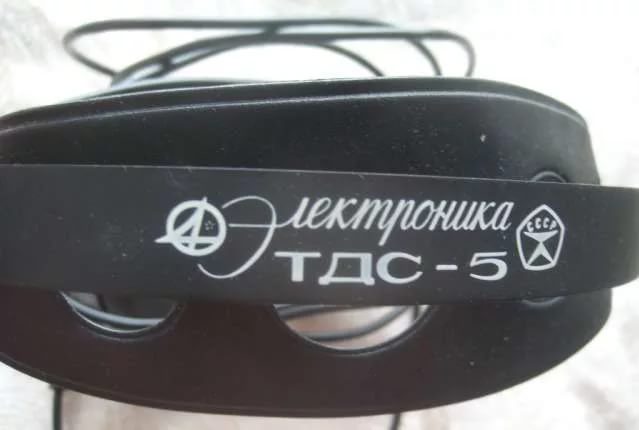
Severe Saratov engineers were tasked to create something similar to YAMAHA HP-1. Probably, the word "similar" Soviet experts literally understood and copied the Japanese clean. Only a little screwed up with headband ergonomics (the soft fabric was replaced in the original by a more rigid elastic plastic, and later on leatherette in TDS-5M), to make production cheaper and guided, probably, by a fair truth saying: “What is comfortable for the Japanese, Japanese - death.
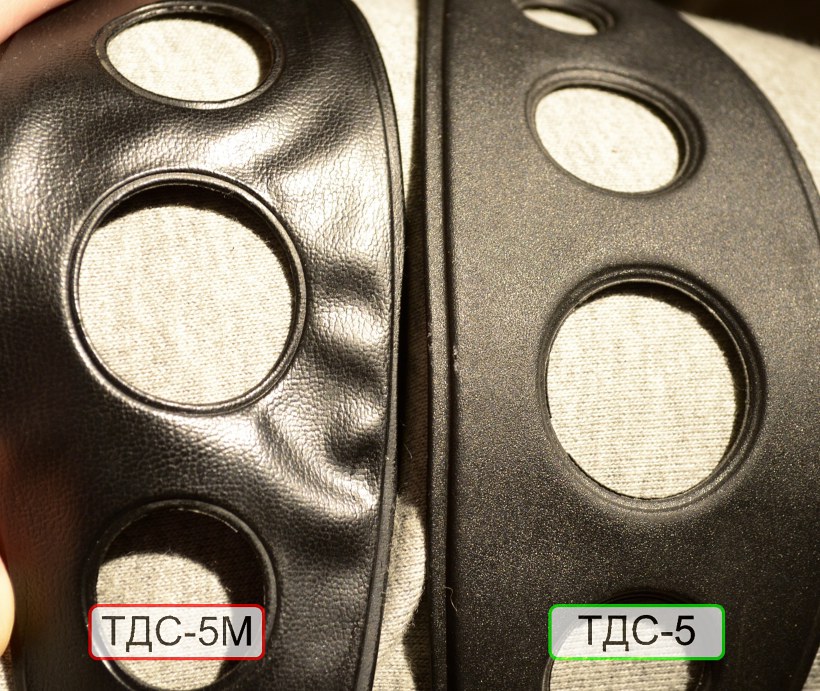
But the membrane for the Soviet sample was thinner, which is surprising, by as much as 4 microns, the material is the same - polyethylene terephthalate film. The serial sample ofclone TDS-5 appeared in 1984, and by the arrival of lemonade general secretary in 1985, he began to en masse in Soviet stores.

After a not too long time, Soviet engineers, by analogy with their Japanese colleagues, cloned a copy and released a little more advanced TDS-5M. Perhaps, these models can be called the most popular isodynamic headphones in the USSR.
In accordance with the applicable state standard, the TDS-5 / TDS-5M headphones have the following technical characteristics:
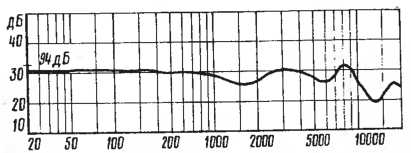
With the release of TDS - 5 is also associated a funny legend, which I was told by one of my friends during the preparation of the material. The events that are described in it, allegedly took place at the Saratov factory, some time after the release of the TDS-5. According to the legend, the head of the sector, who dealt with this topic, arranged for submission to subordinate engineers about some other project. Completing the fiery speech, he rained in against the subordinate accusations of the inability to do something worthwhile, reinforcing it with strong words. In particular, he said something like: “We have not done anything worthwhile while you are sitting here. Nothing, the TDS-5 was normally done and that, all go to sleep ... but (stolen - author's note) in Japan! ”.
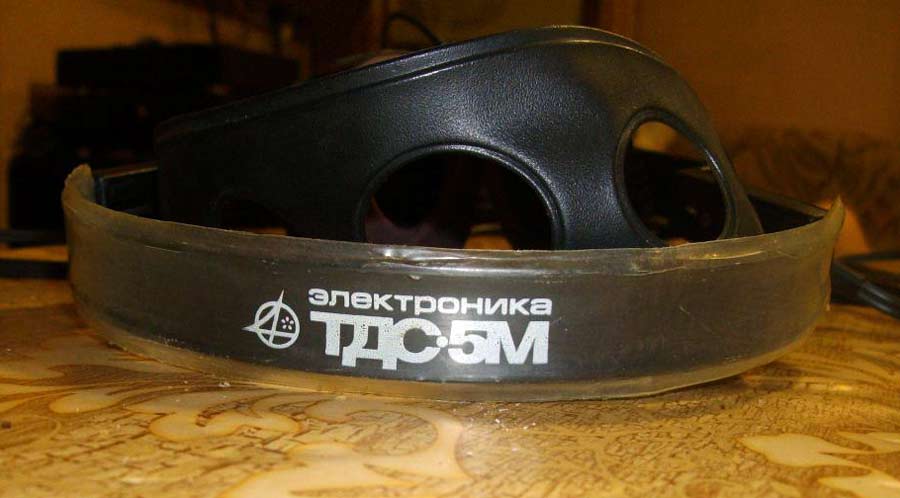
At the time this phrase was pronounced, the plant’s deputy director went to the office, who could not tolerate foul language at workplaces, and constantly promised to transfer employees to the workshop who used to swear at him. What he heard clearly outraged him, but the chief sector did not lose his head and, looking at the first engineer he found, clearly said the following phrase: “Sleep with your wife in Japan, and then sit for a day, but hand over the drawing in its normal form!”. It is not known how this attempt ended to deceive the perception of the authorities and whether the incident actually took place. According to rumors, the joke went to the people and for some time, when speaking about engineers involved in copying foreign equipment, the phrase “Sleep with my wife in Japan” began to be used.
Despite the almost complete plagiarism of the Japanese sample, the Soviet TDS-5 and TDS-5M became the most popular isodynamic headphones in the USSR. According to the statements of many who found this difficult time - these Saratov YAMAHA clones are among the best HI-FI devices mass produced in the Soviet Union.
Jeans
Pult.ru offers a wide range of dynamic, orthodynamic and electrostatic headphones . You can view the current offer in the appropriate section of the catalog .
The material used photo content from Max Kryukov's iXBT gallery aka Fagear - a link to the album , as well as frames from a comparative review www.youtube.com/watch?v=u8z8xiuFt0A

For example, there was no necessary polymer film - they replaced it with the one that was, the capacitors did not fit in capacity - they fitted a circuit, etc. In defense of Soviet engineers, it can be said that the full development cycle of similar devices would take decades, and the citizens of the USSR from a certain point wanted to use really high-quality equipment that meets the requirements of the time. Quickly such a task could be solved only by partial or complete plagiarism. Under the cut a story about, perhaps, the most accurate cloning in the Soviet audio equipment.
One of the most vivid examples of such borrowing was the “TDS-5” isodynamic headphones, which were produced by the Saratov Radio Engineering Plant No. 887 (later it was FGUP NPP Kontakt) since 1984.

By the way, now the enterprise lives and almost well under the name of NPP Kontakt JSC, produces vacuum switches and NFC chips, and is striving to become a Skolkovo resident. Despite the presence of native isodynamic analogues by that time, the developers of TDS-5 decided not to philosophize slyly and copy, perhaps, the most famous headphones of the Japanese company YAMAHA. Therefore, in this case, the creators of TDS-5 need to be understood specifically Japanese engineers who were able to design a truly iconic model, both for their market in the 70s, and for ours in the 80s.
Market problem
In the mid-seventies, portable headphones became high-demand products not only in the United States and Europe, but also in Japan. Until 1976, the most popular headphone emitters were classic speakers. A number of companies, including STAX in Japan, KOSS in the USA and Sennheiser in Europe, also created in small series exotic electrostatic headphones for a narrow audiophile market. The sound quality in dynamic headphones of that period left much to be desired, and the fidelity of electrostatic reproduction was prohibitively expensive for the vast majority of potential consumers. The vacuum between the dynamic jamblings and the financially inadequate electrostats of the 70s should have been occupied by orthodynamics.
The isodynamic principle of acoustic radiation itself was well studied in the 50s and was recognized as not very promising due to the lack of then suitable materials for membranes. The appearance of strong and fairly thin polymer films in the 60s changed the view of orthodynamic drivers, however, the creation of such devices was rather experimental than serial.
The market was not spoiled by high sound quality, and its demands were completely satisfied with dynamic emitters. The narrow audiophile segment covered electrostatics, but they were expensive, imperfect, and required mandatory reinforcement, which made exploitation difficult. Of the (ortho) dynamic headphones were even more exotic, individual attempts by companies to create successful and popular isodynamic headphones failed with a crash in the late 60s. However, the engineers of YAMAHA decided to master this complex task, and in 1972 the specification for orthodynamic headphones, the future HP-1 (YH-1), was formed.
Development problems and their solutions
The main problem of the creators of these headphones was not fundamentally theoretical, but technological. Hundreds of materials were tested as membrane materials. During the development of HP-1 (YH-1), a 12-µm-thick polyester film was used for the first time, which has already been used in the manufacture of tape cassettes.

Orthodynamic driver
The material had sufficient strength, and also easily withstand the process loads when printing a metal layer, which was an electromagnetic coil. Thus, the “philosopher's stone” of isodynamics was found, which made the technical process simple and relatively inexpensive.

The issue of product recognition and ergonomic convenience was entrusted to the Italian industrial designer Mario Bellini, who was famous at the time. Who was impressed with the product's characteristics, and, one might say, put the soul into the headband and recognizable features of the
The excitement in the west and the triumph in the Japanese homeland
By 1976, the first serial samples were made. The start of sales in Japan was extremely successful, since the use of the isodynamic principle allowed us to simultaneously improve the fidelity of playback, reduce the weight and size of the headphones, thereby significantly improving ergonomics. With the advent of HP-1 (YP-1), YAMAHA has become one of the world leaders in portable audio, such as KOSS, Sennheiser, Beyerdynamic and SONY. Only these headphones were honored as a cult product on the company's official website.

The caution of European and American music lovers in relation to the Japanese novelty was quickly replaced by rush demand, which brought YAMAHA AUDIO DIVISION a very impressive income. However, these serious results in the world where KOSS and Sennheiser reigned faded in comparison with the popularity of the product in the Japanese market, where the HP-1 became a real hit.
Contrary to the calculations of marketers YAMAHA, the model became popular not only among audiophiles, but also won the mass user. In connection with the interest of the market in the device, it was developed, by the end of 1976 an evolutionary sequel of the cult device called HP-2 was created. This was followed by their own clones from YAMAHA with minor changes under the indices HP-3, YH-1, YH-2, YH-3. The most significant difference in their design was the reduced diameter of the effective membrane area, which was 46 mm for YH-3, instead of 48 mm for HP-1.
Specifications of the legendary ears from YAMAHA were as follows:
- Frequency range - from 16 to 20 000 Hz;
- SOI + noise: 0.9% (with SPL = 90 dB);
- Sensitivity: 96 dB / mV;
- Resistance: 150 Ohm;
- The diameter of the membrane: 12 mm;
- Membrane material: polyester film (polyester);
- Mass: 290 g.
Among other things, perforated ferrite magnets of round shape were used in the design. Reducing the diameter of the membrane slightly reflected on the frequency response, but in general the sound did not change anything. Really impressive in these headphones was the price, which in 1976 was $ 47 for the HP-2 and $ 55 for the HP-1 in the United States, which did not differ much from the cost of the average dynamic headphones of that time. In the Japanese homeland, their cost was even lower.
From the Japanese legend to the dream of the Soviet music lover
As I noted in one of the past materials, it was important for the Soviet leadership in the early 80s to make the people understand that the USSR could overtake and overtake. The lag, noticed by the party and the Soviet government, was planned to be overcome at the Stakhanov pace. To this end, specially trained people imported into the USSR the best examples of Western technology, including audio, for further preparation and industrial espionage. Approximately in this way, the cult YAMAHA headphones came to the country of the victorious developed socialism, and not to the creative audiophile Lychnitsky, or to the important semi-defense enterprise - Radio Engineering Plant No. 887, which is also the Research and Production Enterprise in Saratov.

Severe Saratov engineers were tasked to create something similar to YAMAHA HP-1. Probably, the word "similar" Soviet experts literally understood and copied the Japanese clean. Only a little screwed up with headband ergonomics (the soft fabric was replaced in the original by a more rigid elastic plastic, and later on leatherette in TDS-5M), to make production cheaper and guided, probably, by a fair truth saying: “What is comfortable for the Japanese, Japanese - death.

But the membrane for the Soviet sample was thinner, which is surprising, by as much as 4 microns, the material is the same - polyethylene terephthalate film. The serial sample of

After a not too long time, Soviet engineers, by analogy with their Japanese colleagues, cloned a copy and released a little more advanced TDS-5M. Perhaps, these models can be called the most popular isodynamic headphones in the USSR.
In accordance with the applicable state standard, the TDS-5 / TDS-5M headphones have the following technical characteristics:
- The type of transducer is orthodynamic;
- Nominal frequency range: 20–20 000 Hz (± 2 / ± 3 dB);
- Resistance, at a frequency of 500 Hz - 100 Ohm;
- SOI, (94 dB, in the frequency range 100 ... 3000 Hz) - 1%;
- Mass - 290 g.

Sleep with your wife in Japan
With the release of TDS - 5 is also associated a funny legend, which I was told by one of my friends during the preparation of the material. The events that are described in it, allegedly took place at the Saratov factory, some time after the release of the TDS-5. According to the legend, the head of the sector, who dealt with this topic, arranged for submission to subordinate engineers about some other project. Completing the fiery speech, he rained in against the subordinate accusations of the inability to do something worthwhile, reinforcing it with strong words. In particular, he said something like: “We have not done anything worthwhile while you are sitting here. Nothing, the TDS-5 was normally done and that, all go to sleep ... but (stolen - author's note) in Japan! ”.

At the time this phrase was pronounced, the plant’s deputy director went to the office, who could not tolerate foul language at workplaces, and constantly promised to transfer employees to the workshop who used to swear at him. What he heard clearly outraged him, but the chief sector did not lose his head and, looking at the first engineer he found, clearly said the following phrase: “Sleep with your wife in Japan, and then sit for a day, but hand over the drawing in its normal form!”. It is not known how this attempt ended to deceive the perception of the authorities and whether the incident actually took place. According to rumors, the joke went to the people and for some time, when speaking about engineers involved in copying foreign equipment, the phrase “Sleep with my wife in Japan” began to be used.
Total
Despite the almost complete plagiarism of the Japanese sample, the Soviet TDS-5 and TDS-5M became the most popular isodynamic headphones in the USSR. According to the statements of many who found this difficult time - these Saratov YAMAHA clones are among the best HI-FI devices mass produced in the Soviet Union.
Jeans
Pult.ru offers a wide range of dynamic, orthodynamic and electrostatic headphones . You can view the current offer in the appropriate section of the catalog .
The material used photo content from Max Kryukov's iXBT gallery aka Fagear - a link to the album , as well as frames from a comparative review www.youtube.com/watch?v=u8z8xiuFt0A
All Articles